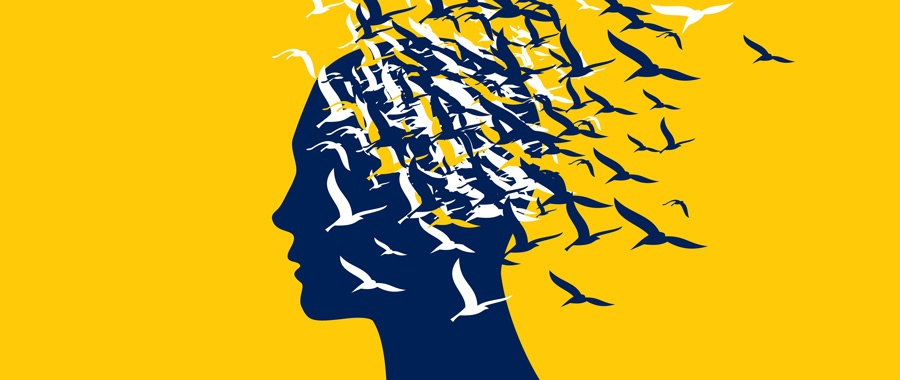The views expressed in our content reflect individual perspectives and do not represent the authoritative views of the Baha'i Faith.
I dreamed I was flying and Abdu’l-Baha was standing below me. His hands were at his waist as his fingers signaled up to me: “This way, now turn, bank, glide, and go.”
I obeyed his every direction as I flew up near the ceiling of an empty auditorium unafraid and free in that mysterious and memorable dream of many years ago.
If in this day a soul shall act according to the precepts and the counsels of God, he will serve as a divine physician to mankind … he will call the dead of this contingent world to life; for the confirmations of the Abha Realm are never interrupted, and such a virtuous soul hath, to befriend him, the unfailing help of the Company on high. Thus shall a sorry gnat become an eagle in the fullness of his strength, and a feeble sparrow change to a royal falcon in the heights of ancient glory. – Abdu’l-Baha, Selections from the Writings of Abdu’l-Baha
Since then, I have kept to the curriculum of Baha’i precepts and counsels as this quote from Abdu’l-Baha stipulates. Just know, I am no eagle or falcon yet, maybe just an aspiring sparrow, but, still, I want to share what I have learned about getting aloft.
Learning to fly began at dirt level when I realized I had no wings at all, just a heavy heart and an ignorant soul, in confusion and disorientation, resistance and inertia, even sickness and despair. At least it began there for me.
I lacked the wisdom to seek the counsel of believers, or the patience to develop a spiritual practice of my own. This until my brother and his wife, both Baha’is, spoke to my wife and I about the Baha’i Faith. So began my journey, in and up.
I know now that learning to fly requires some measure of faltering, even crawling on the ground, many failed attempts and earnest mistakes, while trying to catch the thermals of God’s good graces. But I assure you, persistence pays off and sincere effort produces lift.

I could not have sprouted any wings at all without the powerful voice of Baha’u’llah, and Abdu’l-Baha’s interpretative commentary urging me on, their words spoken from the heights and the depths of our need to change, to heal and be healed:
I am the Sun of Wisdom and the Ocean of Knowledge. I cheer the faint and revive the dead. I am the guiding Light that illumineth the way. I am the royal Falcon on the arm of the Almighty. I unfold the drooping wings of every broken bird and start it on its flight.
Mind you, the Baha’i Faith has no ritual script for how one advances, except that one must pursue the answers to his or her spiritual questions. But my reason for speaking to you here is to remind you that learning to ascend requires study of the Word. I found the following Baha’i passage from Baha’u’llah, which speaks of the two wings of our being, particularly helpful:
Having created the world and all that liveth and moveth therein, He [God] … chose to confer upon man the unique distinction and capacity to know Him and to love Him – a capacity that must needs be regarded as the generating impulse and the primary purpose underlying the whole of creation ….
As I understand this, to develop spiritually requires a working relationship between the so-called head and the heart, those two fundamental capacities of knowing and loving, those two wings of being human. In other words, the process has to do with becoming balanced, and when we find that sweet spot, we gain “impulse” and “purpose,” that is, thrust, propulsion, and lift.
The spirit thus coordinated is not cold and calculating, but warm and discerning, fire and water alchemized, a man or woman once broken and fragmented, now balanced and unified, in possession of two wings, one bird.
For a Baha’i, in the sacred precincts of the Covenant, the head and the heart intermingle and interact, preferably among a flock of like-minded others, creating the spiritual chemistry of a new mind, ear, and eye, just as the Faith promises.
What’s the Covenant? Simply that commitment we Baha’is make to live, work, and worship within the divine context of the Word of God, and to serve the world. For us souls-in-the making, those of us once broken and split, the Covenant is that solemn contract with God in which we agree to recognize His revelation and then to obey its precepts and counsels.
The Covenant is the threshing floor of a new found identity, then, where the perfection of divine authority meets human recalcitrance, if you will. It is a process to which we entrust our souls, in which the germ is separated from the chaff, a process to which we bring our thirst like wild horses to water, the falcon to the Falconer.
In its starkest philosophical terms, the Baha’i Covenant forms a paradoxical framework in which obedience yields freedom, humility power, and restraint flight, where mistakes transform into meaning, caterpillars into butterflies, dirt into flowers, where metamorphosis happens, and yes, gnats become eagles.
As Abdu’l-Baha wrote:
The true lovers of the Abha Beauty [Baha’u’llah], and they that have quaffed the cup of the Covenant, fear no calamity, nor feel depressed in the hour of trial. They regard the fire of adversity as their garden of delight, and the depth of the sea the expanse of heaven …. – Selections from the Writings of Abdu’l-Baha
That we Baha’is should agree to live and work within the so-called constraints and confines of the Covenant puzzles some. It is an ancient riddle, actually, but never mind. The answer is simple: the actions of love, respect, understanding, kindness, and compassion release the entanglements, strike the balance, and give wings to the soul.
All such virtues, contentment, curiosity, forgiveness, discernment are latent within all of us, until we power them on by the longing and the love of God, and by prayer, fasting, study, and action. Sometimes called the names of God, virtues are not mere ornaments, not brittle badges of moral superiority, but instigating agents of consciousness itself, which give height and depth and spiritual dimensionality. In this passage Baha’u’llah calls them “energies:”
These energies with which the … Source of heavenly guidance hath endowed the reality of man lie, however, latent within him, even as the flame is hidden within the candle and the rays of light are potentially present in the lamp. The radiance of these energies may be obscured by worldly desires even as the light of the sun can be concealed beneath the dust and dross which cover the mirror. Neither the candle nor the lamp can be lighted through their own unaided efforts, nor can it ever be possible for the mirror to free itself from its dross. It is clear and evident that until a fire is kindled the lamp will never be ignited, and unless the dross is blotted out from the face of the mirror it can never represent the image of the sun nor reflect its light and glory. – Gleanings from the Writings of Baha’u’llah
So, the inculcation of virtue happens in the Covenant’s nurturing nest, where the egg hatches for real, where the world is revealed for what it is, and where virtue invites us to serve the Earth and to ascend to heaven.
It is not child’s play to learn to fly. It is perhaps the most harrowing transit of all, across the thresholds of heart and head, body and soul. It requires courage and faith, until one’s eagle’s eye and falcon’s focus is secured.
Virtues are the key, those gentle but profound substances of the soul, increments of the Holy Spirit. They are the pipes and passageways, the seemingly hollow and insignificant bones of the bird which make flight possible.
Even secular psychoanalyst Erik Erikson insightfully named virtue as the ignition point of “ego synthesis,” that is, of the coherent personality itself. He understood hope, will, purpose, competence, fidelity, care, love, and wisdom as virtues that interweave, vertically, creating an alternating current of private and public, love and knowledge, around which spiritual identity coheres until, surprisingly and sometimes in spite of ourselves, we rise.
















Comments
Sign in or create an account
Continue with Googleor